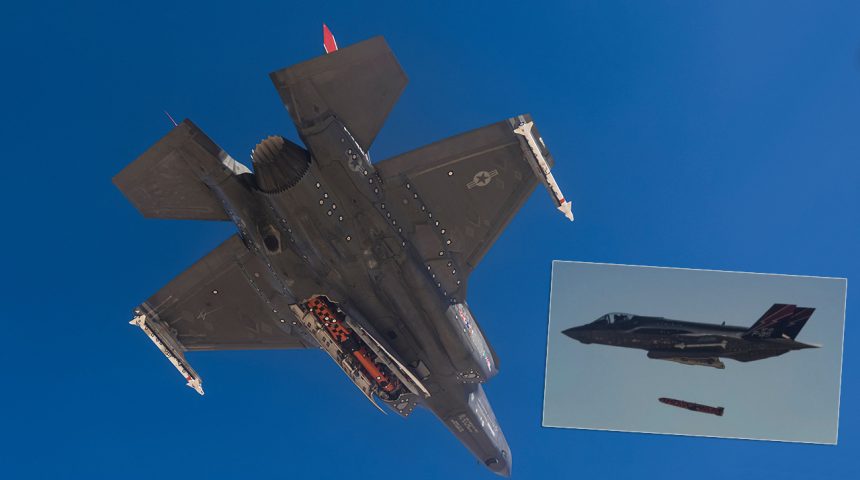The Norwegian Defense Materiel Agency has just released the first photos from a successful test conducted in February of the Joint Strike Missile (JSM).
The first drop test of a Joint Strike Missile has been successful carried out using F-35A AF-01 from Edwards Air Force Base in February. The JSM is a multi-role weapon derived from the Naval Strike Missile (NSM), also developed by Kongsberg Defence & Aerospace and already operational with the Royal Norwegian Navy.
The new missile, developed in partnership with the Norwegian Ministry of Defence, and in close cooperation with the Norwegian Defence Research Establishment, is the only powered anti-ship missile that will fit inside the F-35A and C models weapons bays to enhance the 5th generation aircraft’s ASuW (Anti-Surface Warfare) capabilities. The aircraft will be able to carry two such missiles internally, while additional ones could be carried on the external wing pylons (obviously affecting the overall Low Observability of the aircraft).
The JSM, that was first air-dropped by an F-16 in 2015, features long-range (believed to be in excess of 150 nautical miles), low RCS (radar cross section) and high maneuverability, speed and accuracy.
The first images of the drop from the F-35A were released by the Norwegian Defense Materiel Agency.
Norwegian Defense Materiel Agency just released photos from a successful test conducted in February of the JSM, the air-launched version of the NSM, from good old AF-01 out of Edwards AFB pic.twitter.com/AlDX9DX78K
— Endre Lunde (@endrelunde) March 19, 2021
According to the Norwegian MOD, the first phases of the integration of the JSM, have been contracted directly with the US authorities. The testing started in 2020, and was carried out with drops initially conducted from aircraft parked on the ground, and down into a foam rubber pit. The first air-drop was carried out over a U.S. West Coast range, from AF-01, an F-35A equipped with a number of sensors able to gather speed, movement and vibration data.
“With this first drop, it was checked that JSM can be separated from an F-35A in a safe way. For that, we use an instrumented aircraft,” says Brigadier Jarle Nergård, who is head of the F-35 department in Defense Materiel.
“This aircraft is also equipped with three cameras inside the weapons bay and has mounted a separate camera pod on the wing with three more cameras. In order to be able to analyze exactly what is happening, both the aircraft and the JSM missile are marked with special photo marks that are accurately positioned.”
The missile was also instrumented so that all telemetry data was recorded and sent via data link to the ground.
During the test, AF-01 was chased by a two seater F-16D with a cameraman in the back seat who filmed the separation of the JSM from the F-35 so that footage could be analysed by the Norwegian team.
Following the first separation, more tests will be conducted with the JSM, that has already successful fit checks on all the F-35 variant external wing pylons as well as U.S. Navy and Royal Australian Air Force F/A-18E/F Super Hornets. Along with Norway, Japan has also selected the missile for the JASDF (Japan Air Self-Defense Force) F-35As. Norway is expected to declare IOC (Initial Operational Capability) of the JSM in 2023.








